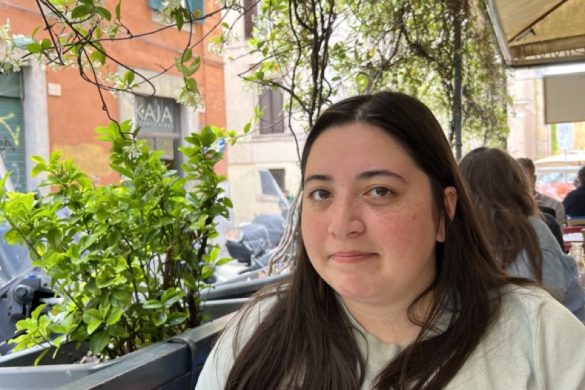
Workers from Complete Tree Care remove a tree outside of Good Hall to keep surrounding building safe. Photo by Cassie Reverman
Large trees have dotted the grounds around Good Hall for decades, now there will be one less tree. While many students may have never paid them much mind, the loss of one of them is sure to trigger at least a brief moment of wondering, “What’s different here?”
It is always a bit sad when things change, whether good or bad, noticeable or not. Taking away something that has been a part of campus for decades is a bittersweet thing. It is a change that we can live with but, if not necessary, should not be done for a number of reasons.
First, trees have an important effect on the environment. According to treepeople.org, trees help to provide oxygen, conserve energy, prevent water pollution and soil erosion, save water, keep cities cooler, provide habitats for wildlife, food (in some cases) and help shield us from exposure to ultraviolet rays.
Sure, it is just one tree we are talking about cutting down, but that does mean a loss of shade, one less tree to help filter water and a few squirrels who may lose their home. With the rate that the earth’s forests are being cut down—about 18 million acres every year, according to the United Nations’ Food and Agriculture Organization—we need to plant more trees, not cut them down.
Second, trees are a beautiful way to decorate campus and give the impression that we are not mere minutes from the heart of Indianapolis. Maybe this is a personal preference, but I have always appreciated how there are trees to break up the buildings and houses surrounding campus.
They make the campus feel more natural and less like we are in a city at all, provide shade for studying and places to hang a hammock. They are also a beautiful way to watch the seasons change while walking to class.
All of that being said, sometimes cutting down a tree is inevitable. Dead or dying trees bring more risk of harm than good and should be removed. This reminds me of an incident in my hometown. Two years ago, at a day care center, an ash tree that had rotted on the inside had one of the branches break off and fall on one of the five-year-olds.
Fortunately, after tests and some time spent at Riley Hospital, the child was fine, but it was certainly a scare and one that caused preventative measures to be taken in the future.
Unfortunately, this is also the case with the Good Hall tree. According to Interim Executive Director of Facilities David Statler, the tree had been monitored by arborists and every effort was made to salvage it. However, with giant holes inside the trunk, the tree was deemed to no longer be structurally sound. It posed a risk of falling onto Good Hall and causing serious injury and damage. In pictures he showed me, I could see how daylight filtered through the large holes.
I am not a fan of removing trees if unnecessary, given their environmental benefits, their beautiful addition to landscape and their place in campus history. As sad as it is to lose a piece of campus that held 100 years of history, the tree was unhealthy, structurally unsound and was a risk to students and the surrounding buildings and needed to be removed.
The good news, according to Director of Communication David Hosick, is that the university recognizes the tree’s
significance and is working with a sustainability group to plant another tree in its place.









